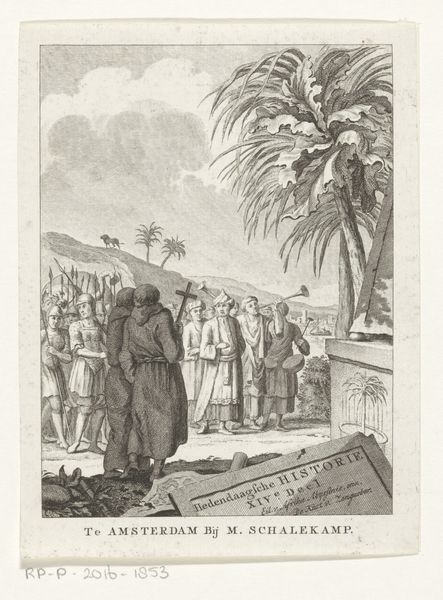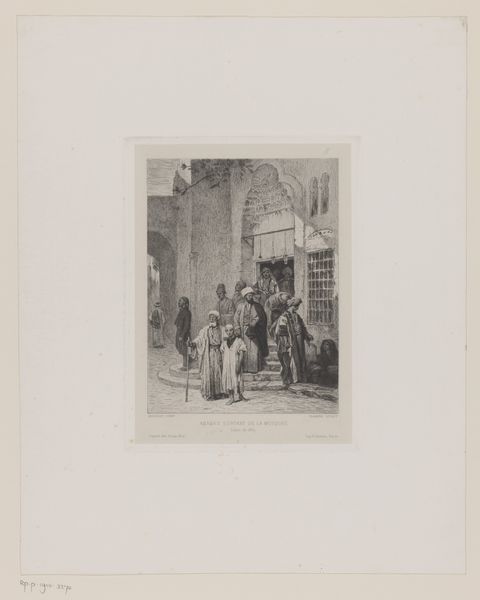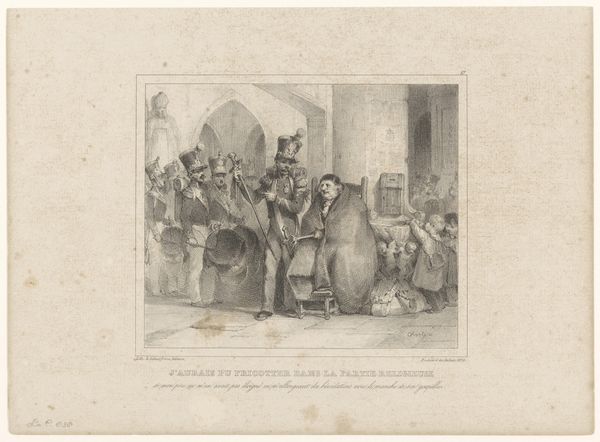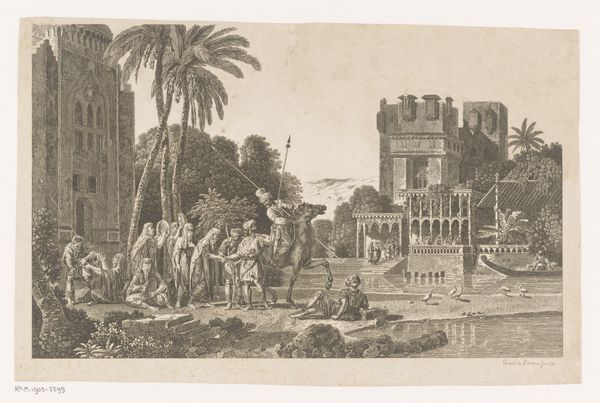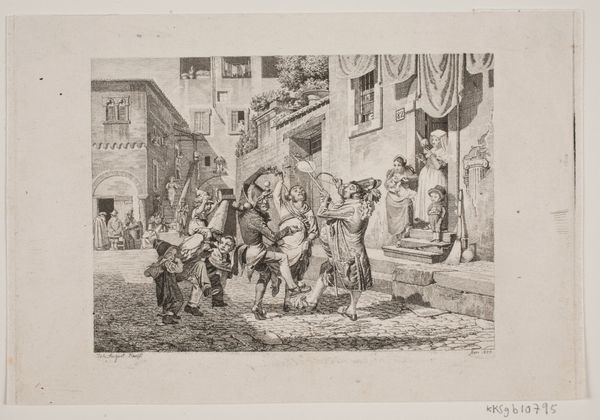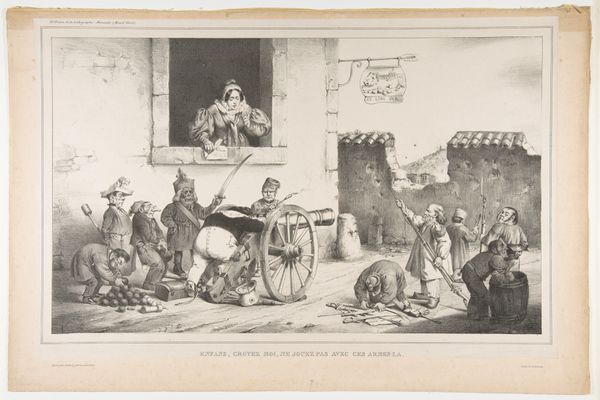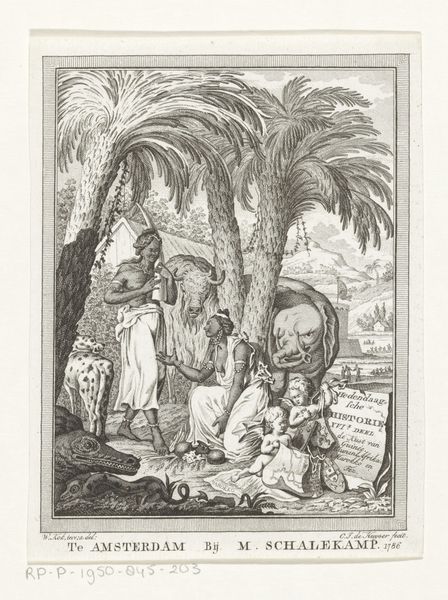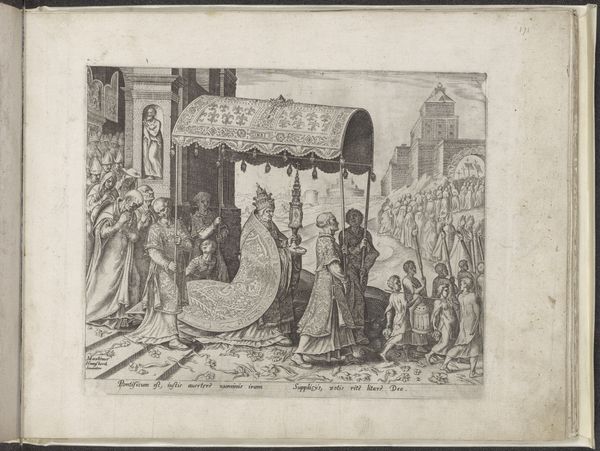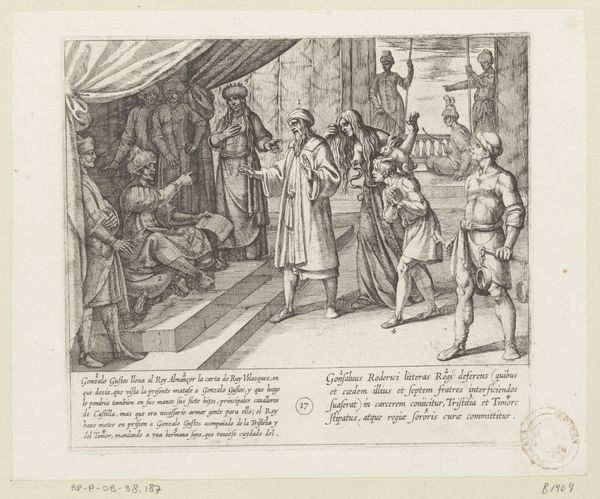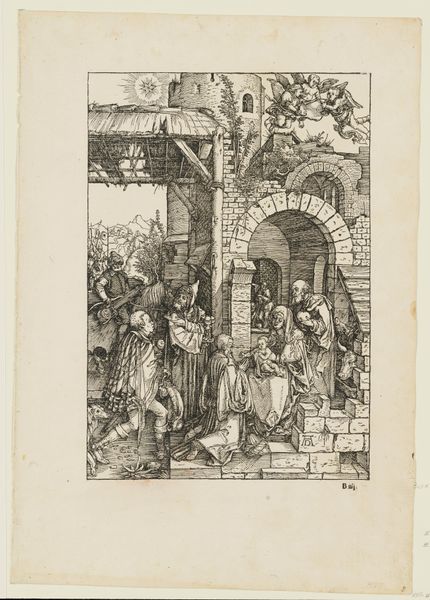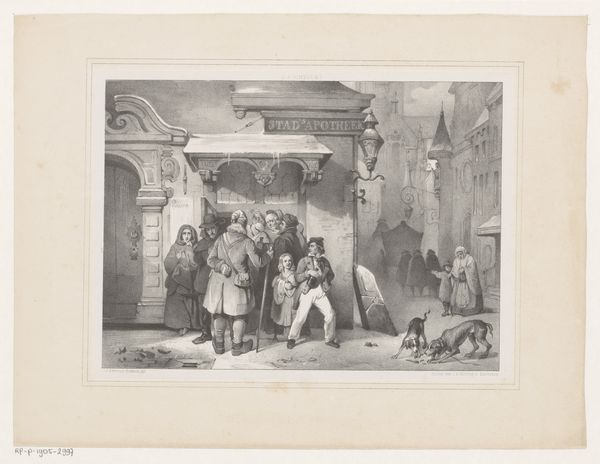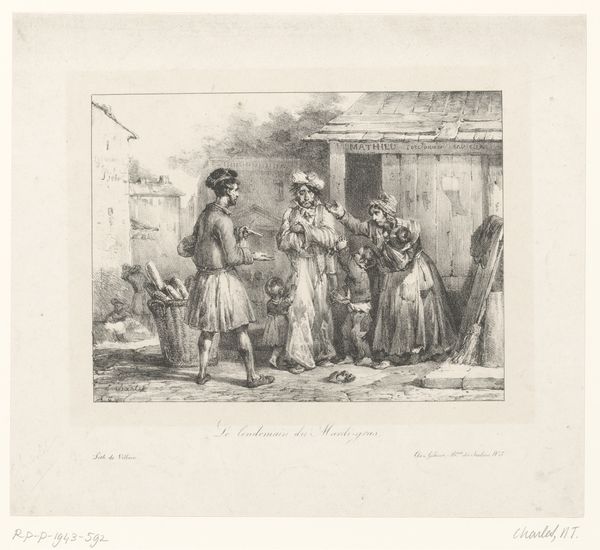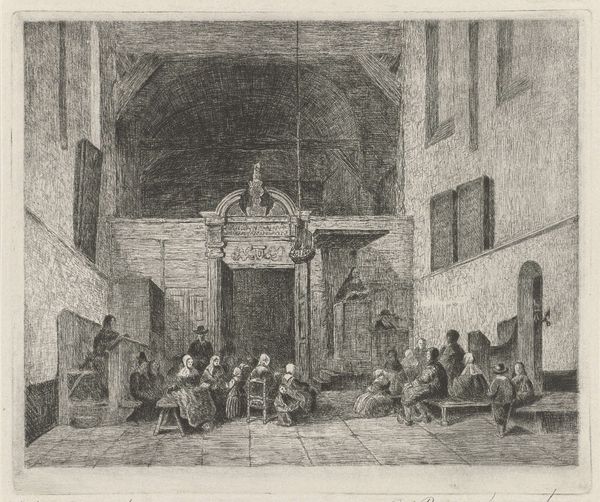
Man met tulband op het hoofd wordt de gevangenis binnengebracht 1673 - 1744
0:00
0:00
reynierblokhuysen
Rijksmuseum
print, etching, engraving
#
narrative-art
#
baroque
# print
#
etching
#
cityscape
#
genre-painting
#
history-painting
#
engraving
Dimensions: height 131 mm, width 146 mm
Copyright: Rijks Museum: Open Domain
Curator: This print, “Man met tulband op het hoofd wordt de gevangenis binnengebracht,” was created sometime between 1673 and 1744. It's currently held here at the Rijksmuseum, and is attributed to Reynier Blokhuysen. It’s an etching and engraving on paper, showing a dramatic street scene. Editor: Dramatic is right. There's an immediate tension, a clear division between those leading the turbaned man and those awaiting him inside the fortress-like building. It makes me think about boundaries and exclusion. Curator: Indeed, let's consider the production itself. The use of etching and engraving allows for the precise details that build this narrative, a controlled means of distribution and conveying ideas, class differences perhaps? Think about the laborious process required to create the plate and the eventual prints. How does the means shape our perception of the subject? Editor: The crisp lines and meticulous cross-hatching certainly convey precision, almost coldness. The contrast between the relatively detailed figures and the stark, fortress-like backdrop creates an intriguing visual relationship. There's an element of forced order, not just in the image, but embedded in the very craft of producing it. Curator: Precisely! Note too how the depiction of the architecture - this orientalizing cityscape framing this drama - speaks to larger networks of trade and the dynamics of global encounters in Blokhuysen’s time, it could be the backdrop to an event in a distant land, bringing wider contexts into play. The slippers dropped in the bottom right; they’re detritus marking social transgression, lost, discarded with its wearer's entry. Editor: Yes, these subtle visual details—the abandoned slippers—do invite us to delve into layers of interpretation. Their presence also reinforces the theme of forced displacement. And how Blokhuysen employs the use of light. It illuminates the central drama but casts the surrounding structures into shadow, perhaps highlighting the obscurity of justice. Curator: These darker tones indeed underscore the somber weight of the social circumstances represented and point us to issues in the era. Thinking beyond simply aesthetics—the labor and resources required—give insights into what mattered, or what was contested. It really pulls the artwork apart beyond aesthetic values to offer us real historic awareness. Editor: It does encourage reflection. When one begins to tease apart Blokhuysen’s strategy here in organizing line, depth and character groupings we may discern the social hierarchies subtly presented throughout. Thank you. Curator: Agreed, and thanks to your formal observations that really amplified the deeper meanings around labor, material conditions and the art production in this artwork of Blokhuysen.
Comments
No comments
Be the first to comment and join the conversation on the ultimate creative platform.
